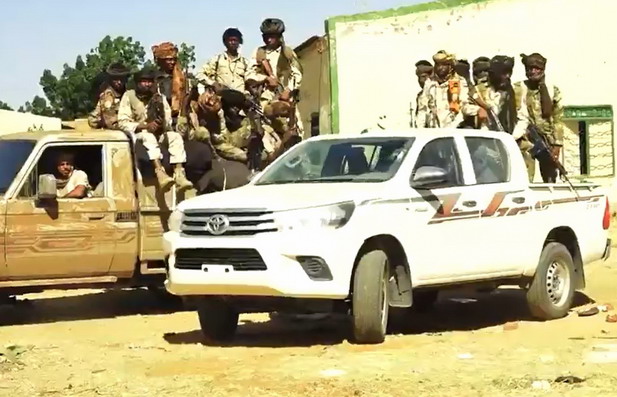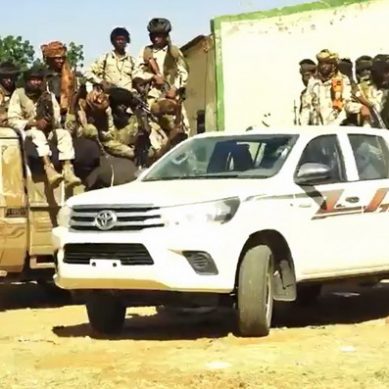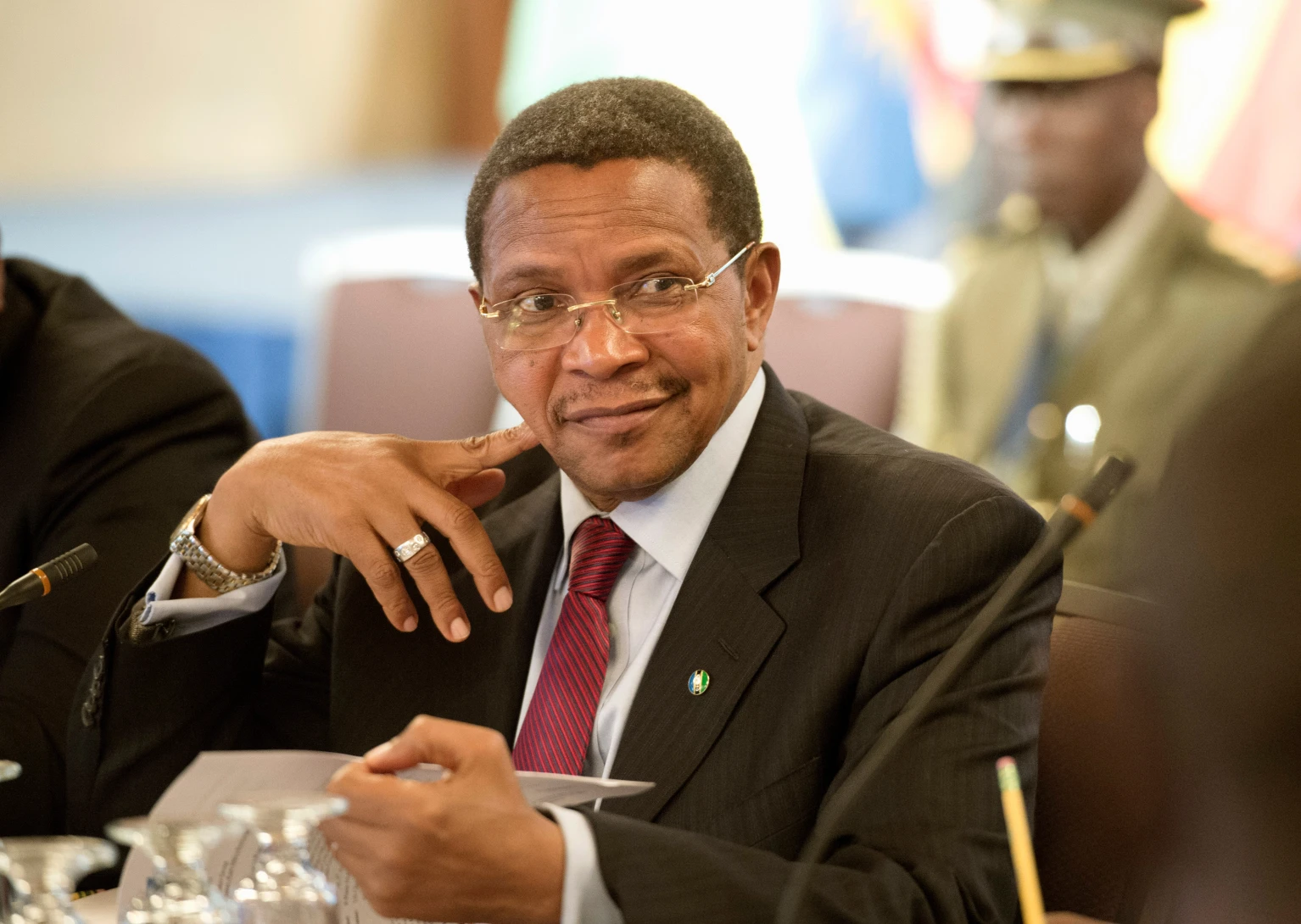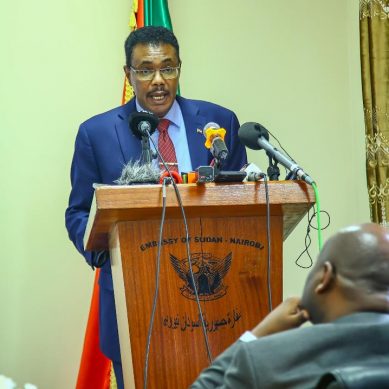
After an 18-month siege, the paramilitary Rapid Support Forces (RSF) captured El-Fasher, the capital of Darfur, Sudan on October 26. The city, until recently the last stronghold of the Sudanese Armed Forces (SAF) in Darfur, is now under full RSF control – worsening an already severe humanitarian crisis. There are widespread reports of atrocities, including mass killings, sexual violence and summary executions.
Sudan’s civil war between the RSF and SAF began in April 2023. The bloody contestation has led to the world’s largest current humanitarian and displacement crisis, with famine, mass casualties and accusations of genocide. The recent escalation suggests this war is far from ending.
On October 31, at a United Nations (UN) press briefing, World Health Organization representatives detailed targeted attacks on hospitals. In October alone, at least five attacks on Al-Saudi Maternity Hospital claimed the lives of 460 people, including staff and patients.
Using satellite images, Yale School of Public Health’s Humanitarian Research Lab corroborates evidence of mass killings around the maternity hospital, as well as a previously unreported massacre at an RSF detention site at a former children’s hospital in eastern El-Fasher.
The humanitarian situation is dire. By the end of October, it had been over 18 months since humanitarian aid was last allowed into El-Fasher. Most of the city’s 1.5 million people, including many displaced, face famine, forcing them to rely on animal feed to survive. Both sides have been accused of deliberately obstructing aid delivery, using starvation as a weapon of war.
Since the RSF took over on October 26, the International Organization for Migration estimates that at least 62,000 civilians have fled the city. Those who flee often take perilous journeys involving violence, extortion and a lack of food, water and shelter. With El-Fasher now under RSF lockdown, many remain trapped in the city, fearing arrest, extortion or execution.
That Darfur is at the centre of war in Sudan is not new. In April this year, in a three-day rampage, the RSF killed over 1,500 civilians at the Zamzam camp for internally displaced people. By May, Zamzam was taken over by the RSF and is now reportedly used as a military barracks.
In August, a Guardian investigation found evidence of large-scale abductions, ethnically targeted slaughter and mass executions. Two years prior, around 15,000 civilians, mostly from the Masalit ethnic group, were massacred in Geneina, the West Darfur capital. Fighters reportedly went house to house, killing people and torching homes.
During the first Darfur war at the turn of the millennium, El-Fasher was the epicentre of mass violence. The attack on the city’s airport by the Sudan Liberation Movement/Army in 2003 was a trigger for what became Sudan’s breaking point.
The Janjaweed militia (now the RSF) was co-opted by then president Omar al-Bashir’s regime to help suppress an insurgency. From 2003-2008, roughly 200,000-300,000 people from the Fur, Zaghawa and Masalit ethnic groups died in the genocide.
This type of military operation, involving large-scale atrocities, is a common method of war for both sides.
Despite global calls for sustainable peace and accountability over the past two decades, action has been lacklustre, with poor coordination of multiple mediation efforts.
About 150,000 people have been killed and close to 12 million displaced in the current war, with millions internally displaced and others fleeing to neighbouring countries like Chad, Egypt and South Sudan. Darfur is again at the epicentre of mass atrocity, with warring parties having no regard for human suffering or international humanitarian and human rights law.
Harking back to the first Darfur war, the RSF now effectively controls the entire Darfur region. This raises concerns about a de facto further partition of Sudan, as the SAF controls most of central Sudan.
With so much evidence of mass atrocity and the Sudanese state seemingly incapable of stopping it, the international community may need to step in and invoke the responsibility to protect (R2P). This means calling for global action when a state is clearly failing to protect its population from genocide, war crimes, ethnic cleansing or crimes against humanity.
Ordinarily, political, diplomatic, humanitarian and mediation options should be explored first. Yet, to date, all such efforts to broker a lasting ceasefire have failed, as both generals continue to believe they can win militarily and gain full control.
Despite mass condemnation and international calls for an immediate ceasefire, including from the UN and African Union (AU), there has been little action to stop the violence. Relying on its Chapter VII powers under the UN Charter, the UN Security Council could invoke R2P and consider collective action, including African-led military or other interventions.
Council members, hamstrung by their national and strategic interests, seem unable to agree on how to proceed. Will Sudan be the situation that breaks this deadlock?
The last time the council directly invoked R2P was in 2013, when it authorised the deployment of French troops in the Central African Republic (CAR) to support the AU mission in the country. The Sudan crisis is far worse than what the CAR was experiencing in 2013.
Two-and-a-half years since the war started, the situation is at its most volatile, exacerbating the suffering of the Sudanese people and threatening regional stability. African and international action has been slow. Unchecked, history is doomed to repeat itself. The bloodstained streets of El-Fasher are the grimmest reminder of this.
With the death toll mounting and the violence escalating to alarming levels, platitudes won’t resolve this crisis. Swift action by, among others, invoking R2P is not just a technical requirement; it is a moral imperative.
- A Tell Media report / By Ottilia Anna Maunganidze – Head of Special Projects, ISS





